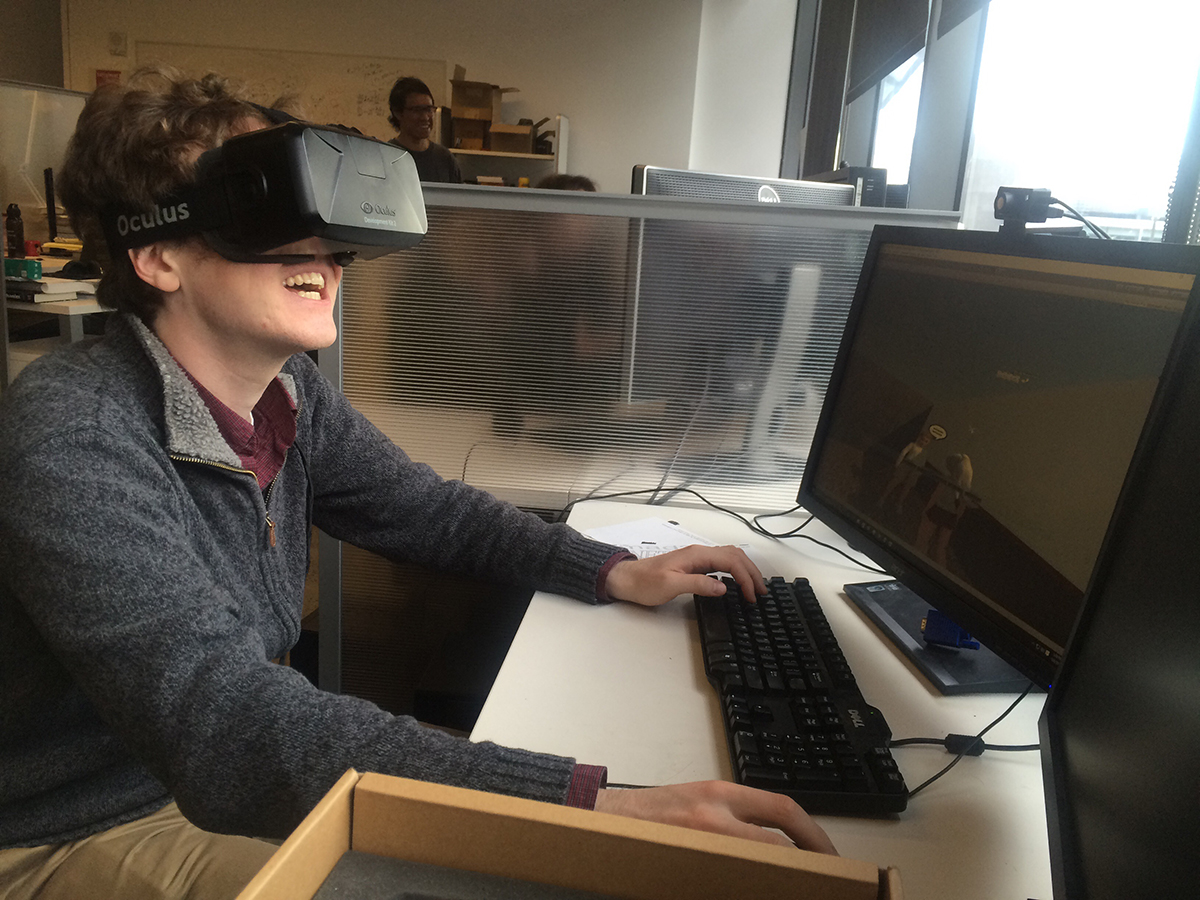Virtual reality game debuts at May 20 GDIAC Showcase
By Bill Steele

Climb a mountain, learn a language or just hop around the shelves in a cartoon kitchen. Those are a few of the adventures you can have at the annual Game Design Initiative at Cornell (GDIAC) Showcase, Friday, May 20, from 4 to 7 p.m. in Carpenter Hall. Visitors should enter Carpenter Hall from the Campus Road entrance; there will be signs giving directions to the various games.
The event is open to the public, and visitors are invited to sit down and play the games created in several undergraduate game design classes by teams of programmers, artists and musicians. It is, in effect, the final exam for the students, whose grades will depend heavily on public reaction to their creations. Visitors are also invited to vote for their favorites, which will be recognized at an awards ceremony at 6:45 p.m.
The showcase will feature a variety of PC games and mobile games for phones and tablets. This year will feature for the first time a virtual reality game, “Crystallize,” a language-learning game in which the player takes a virtual tour of Japan and must go on “quests” to learn new words to make friends and get a job.
Other games include:
- “Aphelion,” in which you drag a tether about the screen while an astronaut is pulling himself along it;
- “Mount Sputnick,” uses an XBox controller to move the four limbs of a rock climber;
- “GMP,” a humorous platform game aimed at young children where a father pineapple must rescue his children from being blended into piña coladas;
- “Brought to Light,” involves a character struggling to find a way through darkness while avoiding gargoyles and specters; and
- “Squeak-and-Swipes,” a mobile puzzle game where you have to rotate the levels of a warehouse so that a mouse can crawl about safely.
Some games displayed in previous GDIAC showcases have gone on to critical and commercial success, and many game design students go on to jobs in the multi-billion-dollar industry. This year’s event may offer a glimpse of the future.
Media Contact
Get Cornell news delivered right to your inbox.
Subscribe